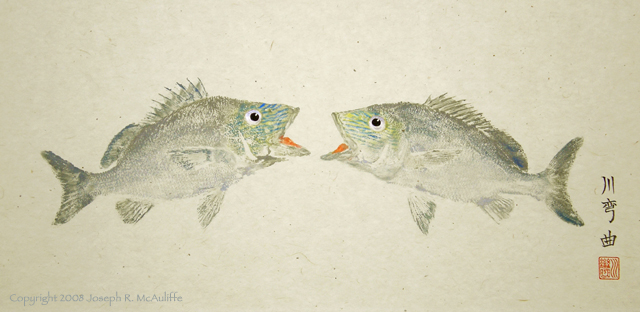
A pair of white grunts (Haemulon plumieri) “kiss” and push each other with wide-open mouths. Whether this intimate contact represents courtship or territorial behavior is not conclusively known. The display exposes the red-colored interiors of their mouths, hence they are also known by another common name: “ruby red lips” or “boca colorada” in Spanish. Similarly, the scientific name Haemulon is derived from the Greek word meaning “blood gums.”
They are called “grunts” because of the sound they produce by grinding their pharyngeal jaws (located in the throat). Their internal, gas-filled swim bladders amplify this grinding into an audible grunting.
White grunts are found in the western Atlantic, rarely north of South Carolina, and south to northern Brazil. Adults inhabit coastal waters from the shoreline to depths of 115 ft, but are most abundant in waters less than 80 ft deep. Juveniles reside in more protected, shallow waters, often in seagrass beds. Adults are generalized carnivores and feed on bottom-dwelling crustaceans, mollusks, echinoderms, and small fish. They feed most heavily at night after they move from reefs to their hunting grounds on open sandy, muddy, or grassy areas.
White grunts are abundant on reefs fringing the Florida Keys and are readily caught during daylight hours. Their abundance in nearshore areas and ease with which they are caught provided early residents of the Keys, “Conchs” as they are known, a reliable source of food during even the hardest of economic times. The white grunt is the basis of a historic Florida Keys dish, “Grits and Grunts,” popularized in Key West over 100 years ago. The dish, typically eaten for breakfast, consists of corn grits with grated cheese, topped by small poached or fried grunts and surrounded by avocado slices. A dribble of “Old Sour,” a sauce made from lime juice, hot peppers, and salt spices up the meal.
Size: 23 x 11 inches (2007)
Return to Gallery 2.